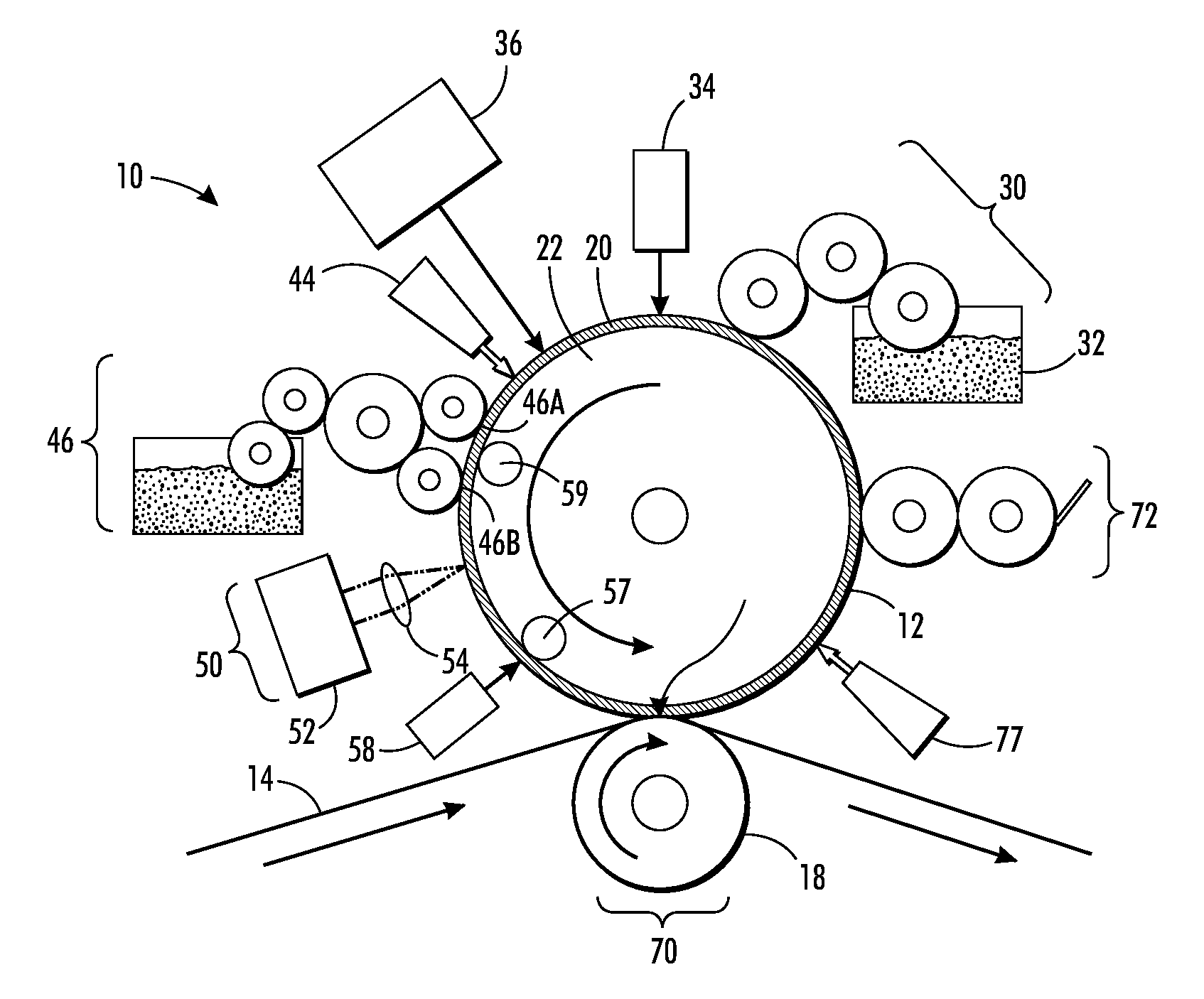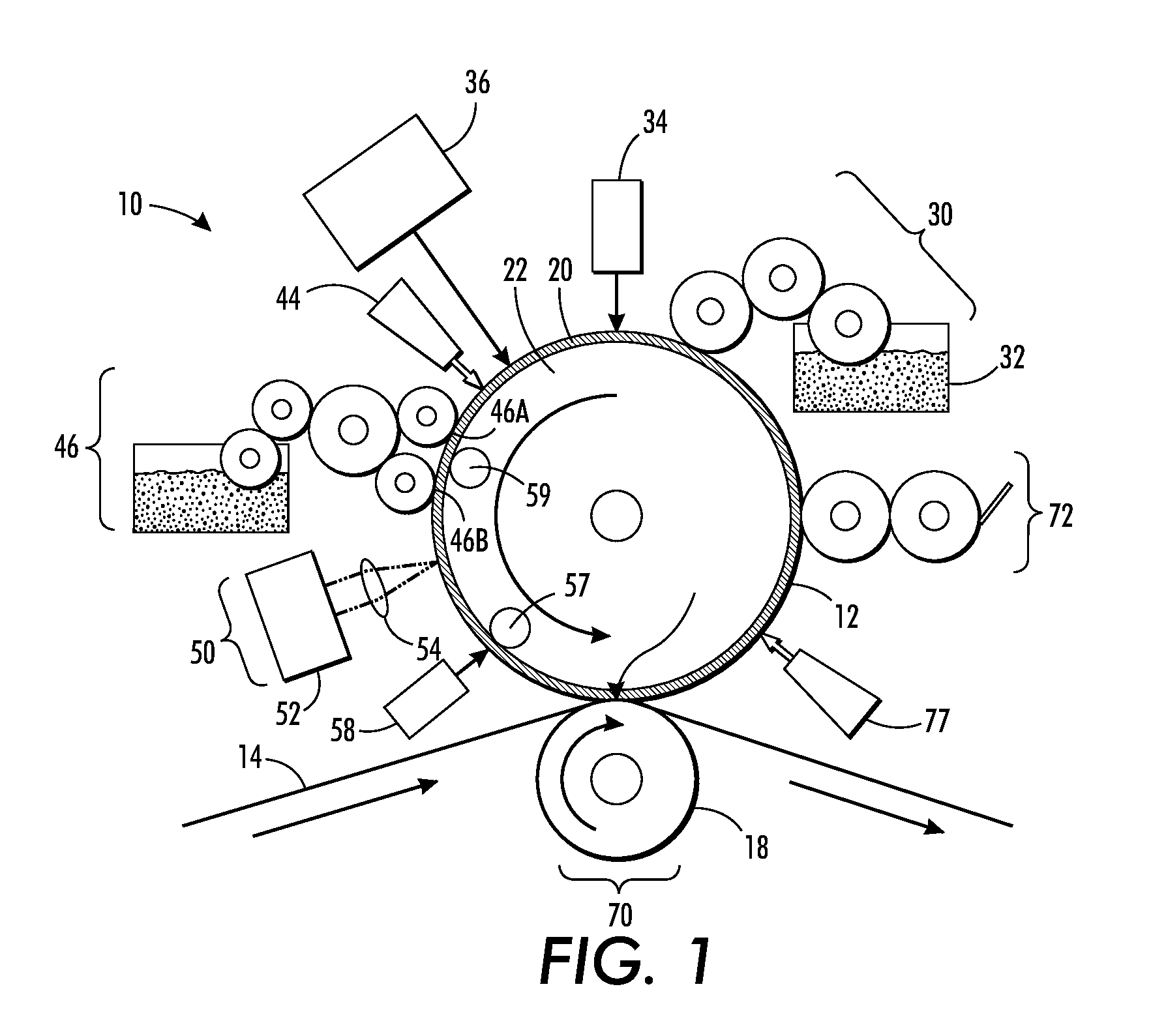Dampening fluid for digital lithographic printing
a technology of lithographic printing and dampening fluid, which is applied in the direction of rotary lithographic machines, dissolving, and other chemical processes, can solve the problems of not being able to accommodate true high-speed variable data printing, not being able to create and print new patterns from one page to the next, and the cost of permanently patterned imaging plates or cylinders is amortized over the number of copies
- Summary
- Abstract
- Description
- Claims
- Application Information
AI Technical Summary
Benefits of technology
Problems solved by technology
Method used
Image
Examples
examples
[0114]FIG. 5 is a view of a set of characters printed using a dampening fluid of 100% Novec™ 7500. FIG. 6 is a view of the same set of characters printed using a dampening fluid containing 90 wt % water, 8 wt % isopropanol, and 2 wt % SILSURF surfactant. Remember that the ink is laid down after the fountain solution. Comparing the arrows (a) in each Figure at the top of the “p”, the corner is sharp in FIG. 5 and not rounded as in FIG. 6, indicating less pull back by the dampening fluid in FIG. 5. Similarly, comparing the arrows (b) in each Figure at the top left of the “a”, the edges here are sharp in FIG. 5 and rounded in FIG. 6, again indicating less pull back by the dampening fluid in FIG. 5. The same effect is seen at the bottom right of the “a”, which is marked with arrows (c).
PUM
| Property | Measurement | Unit |
|---|---|---|
| surface tension | aaaaa | aaaaa |
| polar surface energy | aaaaa | aaaaa |
| polar surface energy | aaaaa | aaaaa |
Abstract
Description
Claims
Application Information
 Login to View More
Login to View More - R&D
- Intellectual Property
- Life Sciences
- Materials
- Tech Scout
- Unparalleled Data Quality
- Higher Quality Content
- 60% Fewer Hallucinations
Browse by: Latest US Patents, China's latest patents, Technical Efficacy Thesaurus, Application Domain, Technology Topic, Popular Technical Reports.
© 2025 PatSnap. All rights reserved.Legal|Privacy policy|Modern Slavery Act Transparency Statement|Sitemap|About US| Contact US: help@patsnap.com



